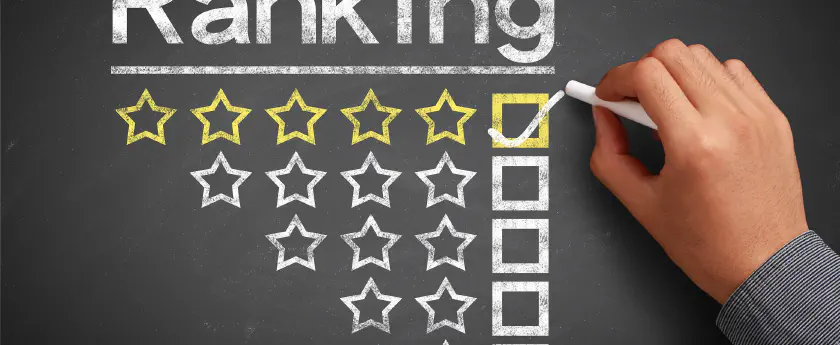Taking Your Business to 'Best in Class' Success
I wear multiple ‘hats’. I am an organizational consultant, a professor, and a student working on a second Ph.D. As I am writing this paper it is a special month for me as a professor and a student. It is the time of year when universities typically have their recognition ceremonies, honoring their students who have excelled in academics and community service. I am doubly honored to be able to see some of my own students receive recognition this month and to be receiving awards myself. Both experiences are the result of hard work and sacrifice.
The students who are recognized by their universities with special certificates and invitations to honor societies are certainly a minority of the student population. Why is that? Some will simply consider these students typical unproductive slackers and leave it at that. Some may attribute it to lack of motivation or even a lack of ability. Certainly these are factors. However, I think for many the problem is lack of knowledge; knowledge of how to succeed. Many students simply do not know the steps to follow to succeed in the academic environment. Without this knowledge, most students’ performance will be mediocre at best.
Numerous students have asked me how to succeed in their classes. This is a question I can easily answer. The path to academic success is not a secret. The same holds true for business. As an organizational consultant I have often been asked: “How do I take my company to the ‘Best in Class’ level?”. Once again, this is a question I can answer. The path to business success is not a secret. In fact, I can answer the question with just one word…
BENCHMARKING.
Most people in business have at least some familiarity with the term benchmarking, but some may have only a vague understanding of what it is and the processes it entails. Benchmarking is an educational tool. It enables you to learn where you are, where you need to go, and illuminates the path for getting there. In the early days of benchmarking, some thought it was another management fad. However, C. Bengert and C. Rooney, in an article titled: “Benchmarking to achieve ‘best in class’ status,” report that benchmarking has been proven effective and is here to stay. Richard M. Petreycik, author of “Why Benchmark?” published in U.S. Distribution Journal agrees. Both authors cite numerous companies that have used benchmarking to improve and maintain market positions. The U.S. Department of Commerce uses benchmark criteria when bestowing the prestigious Malcolm Baldrige Award.
In his article “Benchmarking: how to learn from best-in-class practices,” Robert Mittelstaedt Jr. describes a company that supplies biological and biochemical reagents used in making biotechnology-derived products and in life-science research. Almost 20 years ago, this company began benchmarking and they have remained dedicated to the process. One corporate executive at this company stated that benchmarking had provided their business with the opportunity for quantum improvement instead of small, incremental improvements. He also revealed that benchmarking turns you from an introvert to an extrovert; providing you with the tools to understand not only your customers, but also your competitors. When you are an introvert you are internally oriented. This company made understanding their customers and competitors a priority and it has paid off in vast growth.
If you are interested in utilizing benchmarking to pursue ‘Best in Class’ status, how do you proceed? Perusing journal articles and books written by professionals in the field, you will see that some say benchmarking is a seven-step process, others a nine-step process. There is an obvious lack of agreement among such authors as to the specific steps involved in benchmarking. I find that many authors make the process sound more complicated than it needs to be. But there is no point in undertaking the benchmarking process unless you have one key prerequisite…
Commitment.
According to Michael Spendolini, the author of The Benchmarking Book, and an expert on the practice, benchmarking is a continuous and systematic process. It is not something you do once and then forget about. In order to reap the full benefits and achieve ‘Best in Class’ status, benchmarking must be done on a regular basis. Why? Because change is a fact of life. Our businesses are constantly impacted by changes: changes in the environment, changes in our customers, and changes in our human resources. For companies to not only survive, but thrive, we must be cognizant of the dynamic nature of business and respond accordingly by engaging in ongoing benchmarking to measure and react to these changes.
Commitment is more difficult than it sounds. As I mentioned earlier, many students have asked me how to succeed in their courses. I have responded to these requests by creating a document with numerous suggestions on how to manage their time effectively, organize material, the best way to get information into long-term memory, etc. These suggestions are based on my own experience as well as numerous research studies. I have posted this document on my faculty webpage and I encourage students to read it. If students come and visit me in my office and ask for help, I am happy to take the time to explain these suggestions and talk with them about how to put them into practice. I am thrilled when a student takes action with these suggestions. I have seen students go from making poor or mediocre scores on exams to making A’s after only a few weeks of implementing these techniques. Unfortunately, I find that only a minority of the students who read these suggestions and/or discuss them with me reap such dramatic rewards. Why? Because the majority do not make a commitment to change their behavior. All the tools in the world will not help you accomplish anything unless you pick them up and use them. Many students are not committed enough to invest the time needed to take advantage of the suggestions they have been given.
I have had the same experience as an organizational consultant. When I have been asked to advise a president or CEO on how to achieve ‘Best in Class’ status, I have been more than happy to answer the question and explain the steps involved. It is very rewarding to see a company make a commitment to benchmarking and then reap the benefits as their scores steadily improve. However, just as it is with my students, sometimes commitment is lacking. Perhaps the company does one benchmarking study, but does not continue with the process. In some cases a decision is made to conduct benchmarking research, but the decision is never followed up with action. In either case, the lack of commitment results in stagnation or worse, decline.
Once a commitment to benchmarking has been made, the next step is to make key decisions regarding the research process. For example, are you going to examine your employees, your customers, or both? My recommendation is to survey both employees and customers. When striving for ‘Best in Class’ status, only surveying one or the other is like trying to perform surgery with one eye closed. There is too much critical information that you are just not seeing. Decisions must also be made regarding survey content. If you are going to survey employees, do you want to measure their satisfaction, engagement, perceptions about corporate communications, goals, or…? As far as survey design goes, I recommend hiring a firm that has already done their homework and designed standardized surveys. Using organizational research, reputable firms have already identified the key topics and issues critical to business success. Such firms can provide you with a variety of topics to choose from to customize your survey and meet your needs. In addition, the bugs have already been worked out of the questions. Utilizing their standardized surveys saves you time and effort. Why reinvent the wheel?
The next step is deploying your survey. If you have hired a firm for the survey design process, it makes sense to utilize their services for deployment. Cutting-edge firms will have the tools needed to deploy your survey quickly and in a cost-effective manner. Once the data is collected, the firm should also have statisticians on staff (preferably with training at the doctoral level) to analyze your data and identify the key drivers of employee and customer behavior. Naturally, part of the analysis process with benchmarking is comparing your results to those of other companies in your industry. Only by doing so can you derive meaningful results from your data and gauge where you stand in relation to your competition.
Numerous authors have written about how to obtain benchmarking data on your competitors. I say, “Why waste your time and money? It’s already been done.” There are a few firms out there who have already established databases based on research in numerous industries. It is going to be a lot less expensive to go with a firm that has such a database available so that your data can be quickly and inexpensively compared to other companies in your SIC or NAICS code(s). I do not recommend hiring a firm that does not have at least 1 billion opinions in their database to ensure they will have adequate data in your industry for statistically sound comparisons. Once you have obtained the results of your survey, including your percentile rankings for benchmarking, you will have your ‘study guide’ so to speak, for success. The results will illuminate the key drivers of your business. At this point you once again must take action. A team should be assembled to:
- brainstorm on ideas for improving perceptions of these key drivers;
- decide on an action plan and then;
- implement that plan.
This approach has paid off for many companies. One such company is in the gaming industry. The company retained the services of the National Business Research Institute (NBRI), a business research firm, to design, deploy, and analyze their customer surveys and provide benchmarking data. By following through with regular surveys and implementation of plans based on this data, this gaming company has been able to steadily improve their customer’s overall satisfaction over the last several quarters. In addition, their customers’ intent to return ranking is approaching the ‘Best in Class’ level.
There is an ancient Japanese proverb that states: “Success comes to one who strives to be the best at everything he does. Failure comes to one who starts believing he is.” There is not a single company in existence that cannot learn better ways of doing things through the benchmarking process. If used properly, benchmarking is a powerful tool that can and should be used more often by organizations in all industries. Benchmarking is not a fad; it is a tested methodology that is being used by some of the strongest companies to achieve breakthrough performance and a sustainable competitive advantage. Take the first step toward achieving ‘Best in Class’ status; call NBRI today at 800-756-6168.
Cynthia K. S. Reed, Ph.D.
Organizational Psychologist
National Business Research Institute




























 By submitting this form you agree to our
By submitting this form you agree to our